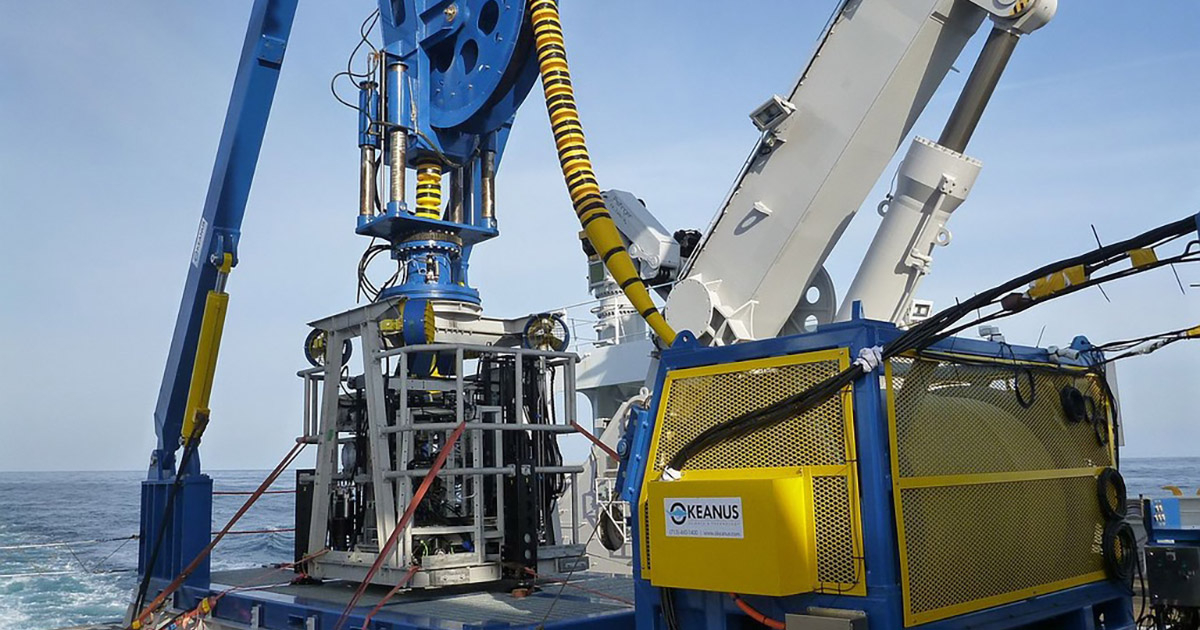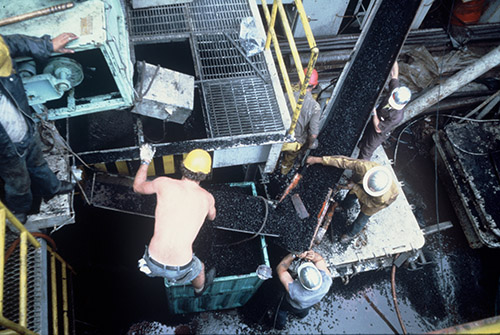


In the world of ocean exploration, where challenges abound and resources are often limited, the ability to channel creative, out-of-the-box thinking is a superpower. It comprises more than just a corporate buzzword; in engineering terms, it represents a disciplined and systematic approach to problem-solving.
The notion was popularized over 50 years ago by a management consultant's nine-dot conundrum—how to connect every dot using just four lines? The answer: Apply lateral thinking, looking beyond the confines of the box for a logical solution. The lesson is clear: by exhausting the options within the box, we might realize that the problem lies in the box itself, forcing us to question conventional thinking.
Marine technologists often face pressures to create entirely novel solutions to navigate legacy pitfalls. But often, true innovation lies in identifying when an existing solution, albeit conceived for another purpose, can inform a creative direction. Rather than reinventing the wheel (to borrow another shopworn colloquialism), can we build upon what's already spinning?
This interplay between leveraging and adapting tried-and-tested approaches is all too familiar to those of us in the deep-sea exploration business. The remotely operated vehicle (ROV) industry is a great example of how the successful application of a subsea asset for one purpose—initially to service offshore oil and gas E&P—can trigger innovation and utility across the entire ocean sector, spawning a growing range of ROV classes and models for an expanding array of underwater tasks.
Instead of settling for one-size-fits-all answers, outside-of-the-box thinking that capitalizes on existing successes proffers solutions to exacting needs. Whether it's designing a custom deck handling system or streamlining a manufacturing process for a winch, fit-for-purpose solutions enhance effectiveness and fuel meaningful progress.
Across the ocean sector, we are now seeing the fruits of such ingenuity, from the dawn of uncrewed surface vessels (USVs) to an ecosystem of intelligent sensors and systems in operation below the waterline. These technologies now touch almost every activity in the marine domain. But there is one emerging industry, yet to begin in earnest, that is less transparent when it comes to the application of advanced ocean tech-deep-sea mining, or more specifically, the collection and processing of polymetallic nodules from the seafloor of the Clarion Clipperton Zone (CCZ) at depths greater than 4,000 meters.
Deploying assets at these depths can be perilous, and very few operators are equipped to do this in a cost-effective and sustainable manner. A large part of the proposed commercial extraction practices hinges on equipment borrowed from the offshore oil and gas playbook—drill ships and riser pipes—hence nullifying the need for reinvention. The same cannot be said, though, for the collector systems, the tethered vehicles designed to gather and feed the nodules into the riser pipe. While most mining entities remain relatively guarded about their proprietary systems, there are several documented collectors, all claiming to return a more precise and nondisruptive harvest than the last. The range of concepts unquestionably reflects the degree of operational complexity at deep-sea depths.

The onboard processing of polymetallic nodules during an ocean mining pilot test in the CCZ in the late 1970's. The collector vehicle, was a novel hydraulic system designed for pioneering ocean exploration. (Credit: Ted Brockett)
From a purely economic standpoint, the key to establishing commercially sustainable operations—running drill ships is an expensive endeavor—is the yield of nodules per hour. Reliability at these challenging depths is paramount. If something breaks, so does the budget. This is where "out-of-the-box" thinking meets the "don't reinvent the wheel" mentality. Mining the CCZ is, by definition, a new frontier, but pertinent lessons from the past still remain.
Back in the 1970s, I worked for International Nickel's Ocean Mining Development team. Tasked with developing a collector that could traverse the CCZ seabed without getting stuck in the soft, cohesive abyssal mud while collecting polymetallic nodules, the goal—much like today—was to introduce the nodules into the riser pipe for transport to the surface while minimizing the quantity of environmental disturbance.
Given the unknowns—not to mention the threat of financial ruin had things gone awry—our design approach was to keep things simple Unlike other methods, we favored rudimentary towed designs and avoided tracked, self-propelled, or other wise complicated blueprints. The collectors only had one moving part, an electric motor driving a simple ducted propeller-style water pump. This pragmatic design later went on to deliver almost 1,000 tons of nodules to the surface vessel during official pilot mining tests.
Our process was guided by practicality: how to cost-effectively test the designs before conducting in-situ tests in the CCZ, at which point we would be paying a high day rate for topside support. Initially, we developed eight different collector designs, all built to test scale, and created our own tow tank facility, repurposing unused land inside a local sand and gravel mining operation. We contracted a local mix plant to develop a batch of simulated seafloor mud and used broken-up concrete to simulate the nodules. We purchased water from the city and used a nearby fire hydrant for access.
Two and a half miles below the surface is not an environment to experiment in. With our repurposed testing facility, we were up and running collector tests in just a couple of weeks and were able to quickly eliminate several of our less productive designs, leaving more time at sea for the most promising concepts.
Has the process for designing today's equipment for deep-sea deployments changed? There's no question that the end goals have shifted, with technological advances luring us further offshore into deeper, less familiar waters.
The ongoing innovation of smarter sensors, communication systems, new composite materials, more resilient coatings, etc., all help extend the ambition of offshore campaigns. And that's without factoring in the true promise presented by the steady integration of artificial intelligence and machine learning techniques.
When compared to early deep-sea mining prototyping, the resources available today, nearly 50 years later, enables us to do more than simply explore; they afford us the opportunity to scale an industrial ecosystem to responsibly identify and establish new commercial opportunities in the Blue Economy.
While the tools of the trade have progressed, a mindset governed by practicality endures. Field-ready equipment for sea bed minerals extraction at 4,500 m down begins with a set of practical requirements or statement of work, which the Okeanus team then draws up in close partnership with a client.
This development cycle, a succession of critical stage gates—each that demands rigorous testing and evaluation—takes time. But this collaborative process and consultation is the key to delivering truly fit-for-purpose, turnkey solutions. Those words are used all too freely in technology circles, but "keeping it simple" is always a highly complex, multidisciplinary task in the world of deep ocean engineering.
Over the last few years, we have partnered with a customer to develop, build, and ser vice a custom skid-mounted 10-ton SWL winch, and LARS proved built specifically to handle a tethered drill for ocean mining activities. The fully rotational LARS incorporates several unique features and modes of operation, including a custom telescoping docking head design and assembly (with failsafe latches), oversized dual groove over-boarding sheave, and an operator-adjustable motion damping to enable safe and efficient launch and recovery operations in high sea states.
Squaring what is possible with modern ocean technology with what's needed in the field today is nothing if not a balancing act. Against the backdrop of ever-smarter technologies driven by Al, edge computing, and seamless real-time communications, the ocean technologist's role is increasingly the arbiter in the tussle between inspiring innovation and optimizing proven approaches.
This feature appeared in ON&T Magazine’s 2024 August edition, to read more access the magazine here.


255 Equity Blvd.
Houma, LA 70360, USA
+1 985.346.4666
11989-A FM 529
Houston, TX 77041, USA
+1 713.460.1400